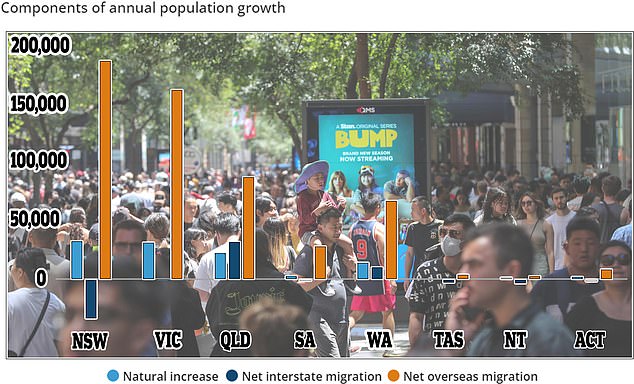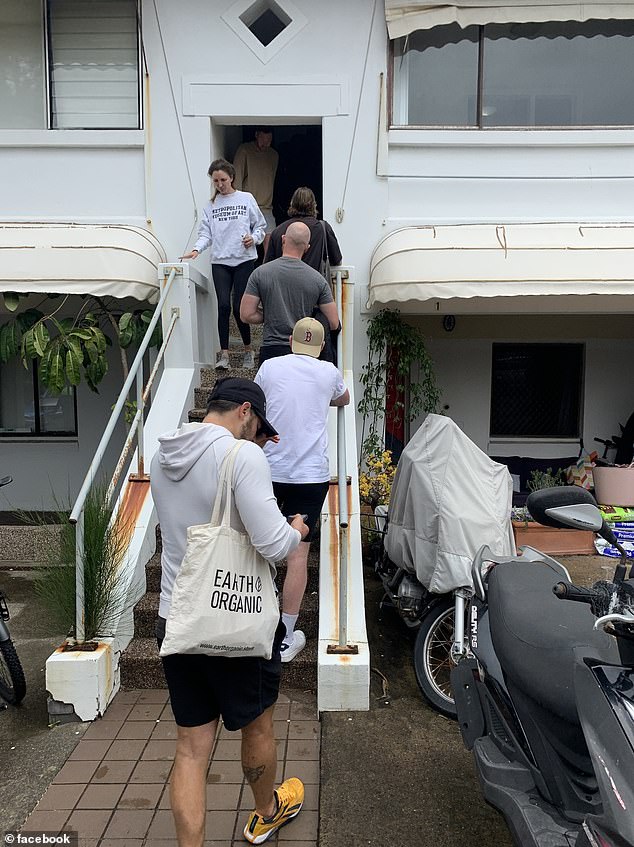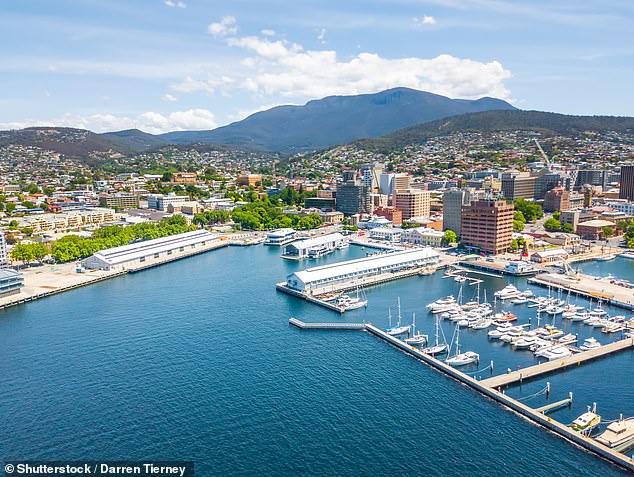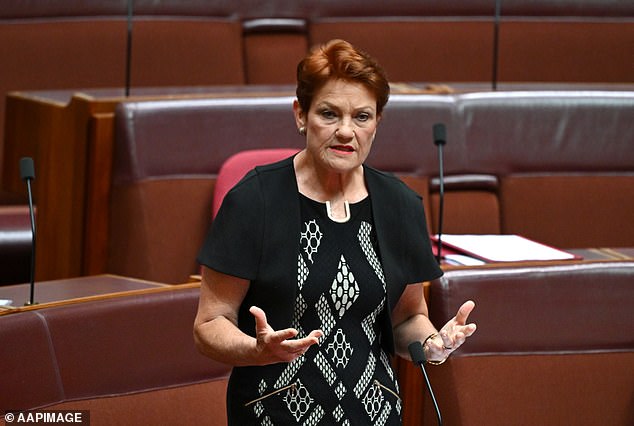Australians are fleeing Sydney in droves as overseas immigration hits new record.
A record 548,800 migrants moved to Australia in the year to September, with a population growth rate of 2.5 percent, the highest since the early 1950s, even as the birth rate dropped.
Sydney, already one of the world’s most unaffordable property markets, is so expensive that many residents are moving interstate in search of cheaper housing as foreign migrants flock.
In one year, 33,202 residents left NSW to settle in another state, while 186,433 overseas migrants arrived.
But when the interstate exodus is taken into account, NSW still needed to accommodate 153,231 new residents before 32,893 new births were counted.
The large exodus means New South Wales has experienced below-average population growth of 2.3 per cent, lagging Western Australia, Victoria and Queensland.
Meanwhile, Tasmania was the only state to record a zero natural increase rate, based on births minus deaths.
The island state saw 3,079 residents move interstate while 4,400 foreign migrants arrived – a very small net increase of just 1,321 new residents or a tiny population increase of 0.3 percent.

Australians flee Sydney in droves as overseas immigration hits record high
Sydney’s median house price of $1.396 million is significantly higher than Brisbane’s $899,474 level, CoreLogic data shows.
Queensland recorded the largest interstate migration flow of 32,625, with 87,954 overseas migrants moving in – for a net increase of 120,579 new residents before 23,010 net births were taken into account.
Queensland’s population growth rate of 2.7 per cent was slightly higher than the national average of 2.5 per cent.
Victoria had 161,758 new overseas migrants, but only 1,119 were heading interstate, with Melbourne still having outer suburbs with a median house price below $600,000, such as Frankston North and Broadmeadows.
While Melbourne is cold in winter, Victoria continues to grow with a population growth rate of 2.9 percent, surprisingly the second highest in Australia.
Mineral-rich Western Australia recorded the second highest interstate migration flow, at 11,233, as 67,629 migrants arrived.
WA has seen Australia’s highest population growth rate of 3.3 per cent, in a state where Perth’s median house price has jumped 18.6 per cent in the past year to reach $718,560.
South Australia saw 1,007 residents move interstate while 28,587 overseas migrants arrived, for a population growth rate of 1.7 per cent.
Per capita, the Northern Territory saw the largest interstate exodus, with 3,606, while only 3,189 overseas migrants arrived, making it the only state or territory where interstate exodus States was greater than the influx from overseas.
The NT’s population grew by just 0.7 per cent.
The Australian Capital Territory covering Canberra saw 1,845 residents move interstate while 8,792 overseas migrants arrived, giving it a below-average population growth rate of 2.1 percent.
Australia now has 26.8 million inhabitants.
Immigration accounted for 83.2 percent of Australia’s population growth in the year to September, with 548,800 new migrants and 111,100 new births, a natural decline of 3.9 percent compared to the previous year.


Sydney, already one of the most unaffordable property markets in the world, is so expensive that many residents move interstate in search of cheaper housing as foreign migrants flock (on the photo, a queue for rent in Bondi)
Shortly before the Australian Bureau of Statistics data was released, One Nation leader Pauline Hanson called for a vote on immigration policy.
“Australians have never been allowed to vote on immigration or multiculturalism,” she told the Senate.
“When were we questioned or consulted about our population?
“Governments have continually introduced high levels of immigration, they say, to stimulate the economy – it’s rubbish.”
While the Australian economy continues to grow, there has been a per capita recession since the June 2023 quarter, where output per worker has been declining.


Meanwhile, Tasmania was the only state to record a zero rate of natural increase, based on births minus deaths (pictured, Hobart’s Constitution Dock)


Shortly before the Australian Bureau of Statistics data was released, One Nation leader Pauline Hanson called for a vote on immigration policy.

